Figure 1.
Proportion of various construction wastes.
Figure 1.
Proportion of various construction wastes.
Figure 2.
Test raw materials. (a) Recycled brick powder. (b) Quartz sand. (c) PVA fiber. (d) Plain soil. (e) Recycled red brick aggregate.
Figure 2.
Test raw materials. (a) Recycled brick powder. (b) Quartz sand. (c) PVA fiber. (d) Plain soil. (e) Recycled red brick aggregate.
Figure 3.
Compaction test process.
Figure 3.
Compaction test process.
Figure 4.
Flowchart for 7d unconfined compressive test and splitting tensile test.
Figure 4.
Flowchart for 7d unconfined compressive test and splitting tensile test.
Figure 5.
Specimens of fiber-reinforced recycled-brick-powder cementitious composite.
Figure 5.
Specimens of fiber-reinforced recycled-brick-powder cementitious composite.
Figure 6.
Compression- and bending-test machine.
Figure 6.
Compression- and bending-test machine.
Figure 7.
Mechanical test. (a) Bending test. (b) Compression test.
Figure 7.
Mechanical test. (a) Bending test. (b) Compression test.
Figure 8.
Scanning electron microscope.
Figure 8.
Scanning electron microscope.
Figure 9.
Compaction test analysis. (a) Maximum dry density and red-brick-aggregate replacement ratio. (b) Optimal moisture content and red-brick-aggregate replacement ratio. (c) Cement content and maximum dry density under different ratios. (d) Cement content and optimal moisture content under different ratios.
Figure 9.
Compaction test analysis. (a) Maximum dry density and red-brick-aggregate replacement ratio. (b) Optimal moisture content and red-brick-aggregate replacement ratio. (c) Cement content and maximum dry density under different ratios. (d) Cement content and optimal moisture content under different ratios.
Figure 10.
Cement admixture with 7d unconfined compressive strength and splitting tensile strength for plain soil:red brick aggregate = 1:0. (a) Cement content and 7-day unconfined compressive strength. (b) Cement content and splitting tensile strength.
Figure 10.
Cement admixture with 7d unconfined compressive strength and splitting tensile strength for plain soil:red brick aggregate = 1:0. (a) Cement content and 7-day unconfined compressive strength. (b) Cement content and splitting tensile strength.
Figure 11.
Cement admixture with 7d unconfined compressive strength and splitting tensile strength for plain soil:red brick aggregate = 1:1. (a) Cement content and 7-day unconfined compressive strength. (b) Cement content and splitting tensile strength.
Figure 11.
Cement admixture with 7d unconfined compressive strength and splitting tensile strength for plain soil:red brick aggregate = 1:1. (a) Cement content and 7-day unconfined compressive strength. (b) Cement content and splitting tensile strength.
Figure 12.
Cement admixture with 7d unconfined compressive strength and splitting tensile strength for plain soil:red brick aggregate = 0:1. (a) Cement content and 7-day unconfined compressive strength. (b) Cement content and splitting tensile strength.
Figure 12.
Cement admixture with 7d unconfined compressive strength and splitting tensile strength for plain soil:red brick aggregate = 0:1. (a) Cement content and 7-day unconfined compressive strength. (b) Cement content and splitting tensile strength.
Figure 13.
PVA-fiber content with 7d unconfined compressive strength and splitting tensile strength for plain soil:red brick aggregate = 1:0. (a) PVA-fiber content and 7d unconfined compressive strength. (b) PVA-fiber content and splitting tensile strength.
Figure 13.
PVA-fiber content with 7d unconfined compressive strength and splitting tensile strength for plain soil:red brick aggregate = 1:0. (a) PVA-fiber content and 7d unconfined compressive strength. (b) PVA-fiber content and splitting tensile strength.
Figure 14.
PVA-fiber content with 7d unconfined compressive strength and splitting tensile strength for plain soil:red brick aggregate = 1:1. (a) PVA-fiber content and 7d unconfined compressive strength. (b) PVA-fiber content and splitting tensile strength.
Figure 14.
PVA-fiber content with 7d unconfined compressive strength and splitting tensile strength for plain soil:red brick aggregate = 1:1. (a) PVA-fiber content and 7d unconfined compressive strength. (b) PVA-fiber content and splitting tensile strength.
Figure 15.
PVA-fiber content with 7d unconfined compressive strength and splitting tensile strength for plain soil:red brick aggregate = 0:1. (a) PVA-fiber content and 7d unconfined compressive strength. (b) PVA-fiber content and splitting tensile strength.
Figure 15.
PVA-fiber content with 7d unconfined compressive strength and splitting tensile strength for plain soil:red brick aggregate = 0:1. (a) PVA-fiber content and 7d unconfined compressive strength. (b) PVA-fiber content and splitting tensile strength.
Figure 16.
Regression curves of PVA content and 7d unconfined compressive strength and splitting tensile strength for plain soil:red brick aggregate = 1:0, cement content 4%, and PVA-fiber content within 0.3%. (a) Regression curve of PVA-fiber content and 7d unconfined compressive strength. (b) Regression curve of PVA-fiber content and splitting tensile strength.
Figure 16.
Regression curves of PVA content and 7d unconfined compressive strength and splitting tensile strength for plain soil:red brick aggregate = 1:0, cement content 4%, and PVA-fiber content within 0.3%. (a) Regression curve of PVA-fiber content and 7d unconfined compressive strength. (b) Regression curve of PVA-fiber content and splitting tensile strength.
Figure 17.
Regression curves of PVA content and 7d unconfined compressive strength and splitting tensile strength for plain soil:red brick aggregate =1:1, cement content 4%, and PVA-fiber content within 0.3%. (a) Regression curve of PVA-fiber content and 7d unconfined compressive strength. (b) Regression curve of PVA-fiber content and splitting tensile strength.
Figure 17.
Regression curves of PVA content and 7d unconfined compressive strength and splitting tensile strength for plain soil:red brick aggregate =1:1, cement content 4%, and PVA-fiber content within 0.3%. (a) Regression curve of PVA-fiber content and 7d unconfined compressive strength. (b) Regression curve of PVA-fiber content and splitting tensile strength.
Figure 18.
Regression curves of PVA content and 7d unconfined compressive strength and splitting tensile strength for plain soil:red brick aggregate = 0:1, cement content 4%, and PVA-fiber content within 0.3%. (a) Regression curve of PVA-fiber content and 7d unconfined compressive strength. (b) Regression curve of PVA-fiber content and splitting tensile strength.
Figure 18.
Regression curves of PVA content and 7d unconfined compressive strength and splitting tensile strength for plain soil:red brick aggregate = 0:1, cement content 4%, and PVA-fiber content within 0.3%. (a) Regression curve of PVA-fiber content and 7d unconfined compressive strength. (b) Regression curve of PVA-fiber content and splitting tensile strength.
Figure 19.
Red-brick-aggregate admixture with 7d unconfined compressive strength and splitting tensile strength at 4% cement admixture and different PVA-fiber content levels. (a) Red-brick-aggregate content and 7d unconfined compressive strength. (b) Red-brick-aggregate content and splitting tensile strength.
Figure 19.
Red-brick-aggregate admixture with 7d unconfined compressive strength and splitting tensile strength at 4% cement admixture and different PVA-fiber content levels. (a) Red-brick-aggregate content and 7d unconfined compressive strength. (b) Red-brick-aggregate content and splitting tensile strength.
Figure 20.
Three-dimensional surface with projection. (a) PVA-fiber volume admixture and recycled-brick-powder mass admixture with compressive strength. (b) PVA-fiber volume admixture and recycled-brick-powder mass admixture with flexural strength.
Figure 20.
Three-dimensional surface with projection. (a) PVA-fiber volume admixture and recycled-brick-powder mass admixture with compressive strength. (b) PVA-fiber volume admixture and recycled-brick-powder mass admixture with flexural strength.
Figure 21.
SEM image of PVA fiber. (a) SEM chart. (b) Pull-out. (c) Fracture. (d) Plastic damage.
Figure 21.
SEM image of PVA fiber. (a) SEM chart. (b) Pull-out. (c) Fracture. (d) Plastic damage.
Table 1.
Main technical indicators of cement.
Table 1.
Main technical indicators of cement.
| Setting Time/Min | Compressive Strength/MPa | Flexural Strength/MPa | Water Requirement of Normal Consistency/% | Stability | Fineness Modulus |
|---|
| Initial setting | Final setting | 3d | 27d | 3d | 27d | 25.4 | qualified | 3.2 |
| 160 | 210 | 25.8 | 45.2 | 5.6 | 9.4 |
Table 2.
Parameter index of fly ash.
Table 2.
Parameter index of fly ash.
| Fineness/% | Water Requirement/% | Loss on Ignition/% | SO3 Content/% | Chloride Ion/% | Water Content/% | CaO Content/% | Free CaO Content/% | Stability |
|---|
| 9.0 | 91 | 2.0 | 1.6 | 0.007 | 0.1 | 1.6 | 0.1 | 0.2 |
Table 3.
Performance index of PVA fiber.
Table 3.
Performance index of PVA fiber.
| Length/mm | Density/g/cm3 | Tensile Strength/MPa | Elongation/% | Modulus of Elasticity/GPa |
|---|
| 6, 9 | 1.3 | 1900 | 8 | 35 |
Table 4.
Technical indexes of plain soil.
Table 4.
Technical indexes of plain soil.
| Water Content/% | Particle Size > 0.075 mm/% | Liquid Limit/% | Plastic Limit/% | Plasticity Index | Type of Soil |
|---|
| 5.5 | 3.7 | 32.89 | 20.96 | 11.93 | Low liquid limit clay |
Table 5.
Mix ratio of compaction test.
Table 5.
Mix ratio of compaction test.
| Group Number | Plain Soil/g | Red Brick Aggregate/g | Cement/g | Water/g |
|---|
| 1 | 2300 | 0 | 3% | 10%, 12%, 14%, 16%, 18% |
| 2 | 1150 | 1150 | 3% | 10%, 12%, 14%, 16%, 18% |
| 3 | 0 | 2300 | 3% | 10%, 12%, 14%, 16%, 18% |
| 4 | 2300 | 0 | 4% | 10%, 12%, 14%, 16%, 18% |
| 5 | 1150 | 1150 | 4% | 10%, 12%, 14%, 16%, 18% |
| 6 | 0 | 2300 | 4% | 10%, 12%, 14%, 16%, 18% |
| 7 | 2300 | 0 | 5% | 10%, 12%, 14%, 16%, 18% |
| 8 | 1150 | 1150 | 5% | 10%, 12%, 14%, 16%, 18% |
| 9 | 0 | 2300 | 5% | 10%, 12%, 14%, 16%, 18% |
Table 6.
Mix ratio of unconfined-compressive- and splitting-tensile-test specimens.
Table 6.
Mix ratio of unconfined-compressive- and splitting-tensile-test specimens.
| Group Number | Mass of Single Specimen /g | Dry Material (Soil + Cement)/g | Inorganic Binding Material/g | Soil or Red Brick Quality/g | Water/g | Fiber Quality/g |
|---|
| Plain soil:red brick aggregate = 100%:0% | C3P0 | 199.33 | 176.18 | 5.29 | 170.90 | 23.15 | 0 |
| C4P0 | 204.90 | 178.98 | 7.16 | 171.82 | 25.92 | 0 |
| C5P0 | 208.01 | 180.84 | 9.04 | 171.80 | 27.16 | 0 |
| C3P0.1 | 199.33 | 176.18 | 5.29 | 170.90 | 23.15 | 0.17 |
| C4P0.1 | 204.90 | 178.98 | 7.16 | 171.82 | 25.92 | 0.17 |
| C5P0.1 | 208.01 | 180.84 | 9.04 | 171.80 | 27.16 | 0.17 |
| C3P0.2 | 199.33 | 176.18 | 5.29 | 170.90 | 23.15 | 0.34 |
| C4P0.2 | 204.90 | 178.98 | 7.16 | 171.82 | 25.92 | 0.34 |
| C5P0.2 | 208.01 | 180.84 | 9.04 | 171.80 | 27.16 | 0.34 |
| C3P0.3 | 199.33 | 176.18 | 5.29 | 170.90 | 23.15 | 0.51 |
| C4P0.3 | 204.90 | 178.98 | 7.16 | 171.82 | 25.92 | 0.52 |
| C5P0.3 | 208.01 | 180.84 | 9.04 | 171.80 | 27.16 | 0.52 |
| Plain soil:red brick aggregate = 50%:50% | C3P0 | 188.81 | 165.00 | 4.95 | 160.05 | 23.81 | 0 |
| C4P0 | 190.59 | 165.93 | 6.64 | 159.29 | 24.66 | 0 |
| C5P0 | 191.61 | 166.68 | 8.33 | 158.34 | 24.93 | 0 |
| C3P0.1 | 188.81 | 165.00 | 4.95 | 160.05 | 23.81 | 0.16 |
| C4P0.1 | 190.59 | 165.93 | 6.64 | 159.29 | 24.66 | 0.16 |
| C5P0.1 | 191.61 | 166.68 | 8.33 | 158.34 | 24.93 | 0.16 |
| C3P0.2 | 188.81 | 165.00 | 4.95 | 160.05 | 23.81 | 0.32 |
| C4P0.2 | 190.59 | 165.93 | 6.64 | 159.29 | 24.66 | 0.32 |
| C5P0.2 | 191.61 | 166.68 | 8.33 | 158.34 | 24.93 | 0.32 |
| C3P0.3 | 188.81 | 165.00 | 4.95 | 160.05 | 23.81 | 0.48 |
| C4P0.3 | 190.59 | 165.93 | 6.64 | 159.29 | 24.66 | 0.48 |
| C5P0.3 | 191.61 | 166.68 | 8.33 | 158.34 | 24.93 | 0.48 |
| Plain soil:red brick aggregate = 0%:100% | C3P0 | 154.87 | 139.83 | 4.19 | 135.63 | 15.05 | 0 |
| C4P0 | 157.41 | 140.48 | 5.62 | 134.86 | 16.93 | 0 |
| C5P0 | 162.67 | 143.84 | 7.19 | 136.64 | 18.84 | 0 |
| C3P0.1 | 154.87 | 139.83 | 4.19 | 135.63 | 15.05 | 0.14 |
| C4P0.1 | 157.41 | 140.48 | 5.62 | 134.86 | 16.93 | 0.13 |
| C5P0.1 | 162.67 | 143.84 | 7.19 | 136.64 | 18.84 | 0.14 |
| C3P0.2 | 154.87 | 139.83 | 4.19 | 135.63 | 15.05 | 0.27 |
| C4P0.2 | 157.41 | 140.48 | 5.62 | 134.86 | 16.93 | 0.27 |
| C5P0.2 | 162.67 | 143.84 | 7.19 | 136.64 | 18.84 | 0.27 |
| C3P0.3 | 154.87 | 139.83 | 4.19 | 135.63 | 15.05 | 0.41 |
| C4P0.3 | 157.41 | 140.48 | 5.62 | 134.86 | 16.93 | 0.40 |
| C5P0.3 | 162.67 | 143.84 | 7.19 | 136.64 | 18.84 | 0.41 |
Table 7.
Fiber-reinforced recycled-brick-powder cementitious composites’ fitting ratio.
Table 7.
Fiber-reinforced recycled-brick-powder cementitious composites’ fitting ratio.
| Group Number | Cement Quality/g | Fly Ash Quality/g | Recycled Brick Powder Quality/g | Quartz sand Quality/g | Quality of Water/g | PVA Fiber Quality/g | Water Reducer/% | Thickening Agent/% |
|---|
| Z0P0 | 439.84 | 527.81 | 0 | 348.36 | 309.66 | 0 | 0.2 | 0.1 |
| Z25P0 | 439.84 | 527.81 | 87.09 | 261.27 | 309.66 | 0 | 0.2 | 0.1 |
| Z50P0 | 439.84 | 527.81 | 174.18 | 174.18 | 309.66 | 0 | 0.2 | 0.1 |
| Z75P0 | 439.84 | 527.81 | 261.27 | 87.09 | 309.66 | 0 | 0.2 | 0.1 |
| Z100P0 | 439.84 | 527.81 | 348.36 | 0 | 309.66 | 0 | 0.2 | 0.1 |
| Z0P1 | 439.84 | 527.81 | 0 | 348.36 | 309.66 | 3.33 | 0.2 | 0.1 |
| Z25P1 | 439.84 | 527.81 | 87.09 | 261.27 | 309.66 | 3.33 | 0.2 | 0.1 |
| Z50P1 | 439.84 | 527.81 | 174.18 | 174.18 | 309.66 | 3.33 | 0.2 | 0.1 |
| Z75P1 | 439.84 | 527.81 | 261.27 | 87.09 | 309.66 | 3.33 | 0.2 | 0.1 |
| Z100P1 | 439.84 | 527.81 | 348.36 | 0 | 309.66 | 3.33 | 0.2 | 0.1 |
| Z0P1.5 | 439.84 | 527.81 | 0 | 348.36 | 309.66 | 4.99 | 0.2 | 0.1 |
| Z25P1.5 | 439.84 | 527.81 | 87.09 | 261.27 | 309.66 | 4.99 | 0.2 | 0.1 |
| Z50P1.5 | 439.84 | 527.81 | 174.18 | 174.18 | 309.66 | 4.99 | 0.2 | 0.1 |
| Z75P1.5 | 439.84 | 527.81 | 261.27 | 87.09 | 309.66 | 4.99 | 0.2 | 0.1 |
| Z100P1.5 | 439.84 | 527.81 | 348.36 | 0 | 309.66 | 4.99 | 0.2 | 0.1 |
| Z0P2 | 439.84 | 527.81 | 0 | 348.36 | 309.66 | 6.66 | 0.2 | 0.1 |
| Z25P2 | 439.84 | 527.81 | 87.09 | 261.27 | 309.66 | 6.66 | 0.2 | 0.1 |
| Z50P2 | 439.84 | 527.81 | 174.18 | 174.18 | 309.66 | 6.66 | 0.2 | 0.1 |
| Z75P2 | 439.84 | 527.81 | 261.27 | 87.09 | 309.66 | 6.66 | 0.2 | 0.1 |
| Z100P2 | 439.84 | 527.81 | 348.36 | 0 | 309.66 | 6.66 | 0.2 | 0.1 |
Table 8.
Compaction test results.
Table 8.
Compaction test results.
| Group Number | Content of Plain Soil/% | Red-Brick-Aggregate Content/% | Cement Content/% | Maximum Dry Density/(g/cm3) | Optimum Moisture Content /% |
|---|
| 1 | 100 | 0 | 3 | 1.89 | 13.14 |
| 2 | 50 | 50 | 1.77 | 14.43 |
| 3 | 0 | 100 | 1.50 | 10.76 |
| 4 | 100 | 0 | 4 | 1.92 | 14.48 |
| 5 | 50 | 50 | 1.78 | 14.86 |
| 6 | 0 | 100 | 1.51 | 12.05 |
| 7 | 100 | 0 | 5 | 1.94 | 15.02 |
| 8 | 50 | 50 | 1.79 | 14.96 |
| 9 | 0 | 100 | 1.54 | 13.10 |
Table 9.
Results of the 7d-unconfined-compressive-strength and splitting-strength test.
Table 9.
Results of the 7d-unconfined-compressive-strength and splitting-strength test.
| Group Number | 7d Unconfined Compressive Strength/MPa | Splitting Strength
/MPa |
|---|
| Plain soil:red brick aggregate = 1:0 | C3P0 | 0.62 | 0.06 |
| C4P0 | 1.18 | 0.10 |
| C5P0 | 1.39 | 0.14 |
| C3P0.1 | 0.73 | 0.09 |
| C4P0.1 | 1.52 | 0.15 |
| C5P0.1 | 1.62 | 0.19 |
| C3P0.2 | 0.79 | 0.10 |
| C4P0.2 | 2.04 | 0.17 |
| C5P0.2 | 2.23 | 0.21 |
| C3P0.3 | 0.96 | 0.11 |
| C4P0.3 | 2.18 | 0.21 |
| C5P0.3 | 2.38 | 0.23 |
| Plain soil:red brick aggregate = 1:1 | C3P0 | 0.85 | 0.08 |
| C4P0 | 1.16 | 0.13 |
| C5P0 | 1.35 | 0.17 |
| C3P0.1 | 1.29 | 0.13 |
| C4P0.1 | 1.79 | 0.20 |
| C5P0.1 | 2.51 | 0.26 |
| C3P0.2 | 1.36 | 0.15 |
| C4P0.2 | 2.16 | 0.23 |
| C5P0.2 | 2.72 | 0.32 |
| C3P0.3 | 1.47 | 0.18 |
| C4P0.3 | 2.76 | 0.29 |
| C5P0.3 | 2.93 | 0.38 |
| Plain soil:red brick aggregate = 0:1 | C3P0 | 0.32 | 0.04 |
| C4P0 | 0.87 | 0.08 |
| C5P0 | 1.13 | 0.12 |
| C3P0.1 | 0.50 | 0.05 |
| C4P0.1 | 1.20 | 0.12 |
| C5P0.1 | 1.31 | 0.13 |
| C3P0.2 | 0.66 | 0.07 |
| C4P0.2 | 1.28 | 0.13 |
| C5P0.2 | 1.47 | 0.15 |
| C3P0.3 | 0.84 | 0.08 |
| C4P0.3 | 1.33 | 0.15 |
| C5P0.3 | 1.55 | 0.16 |
Table 10.
Compressive and flexural strength of fiber-reinforced recycled-brick-powder cementitious composites.
Table 10.
Compressive and flexural strength of fiber-reinforced recycled-brick-powder cementitious composites.
| Group Number | Compressive Strength/MPa | Flexural Strength/MPa |
|---|
| Z0P0 | 37.86 | 14.56 |
| Z25P0 | 35.63 | 13.12 |
| Z50P0 | 31.76 | 12.34 |
| Z75P0 | 28.32 | 11.74 |
| Z100P0 | 25.66 | 10.56 |
| Z0P1 | 38.12 | 16.47 |
| Z25P1 | 36.03 | 15.32 |
| Z50P1 | 32.31 | 14.47 |
| Z75P1 | 28.47 | 13.23 |
| Z100P1 | 26.34 | 11.96 |
| Z0P1.5 | 36.47 | 17.56 |
| Z25P1.5 | 34.32 | 16.14 |
| Z50P1.5 | 29.61 | 15.37 |
| Z75P1.5 | 27.54 | 14.43 |
| Z100P1.5 | 25.21 | 12.54 |
| Z0P2 | 34.78 | 16.15 |
| Z25P2 | 34.97 | 14.23 |
| Z50P2 | 28.73 | 13.15 |
| Z75P2 | 25.43 | 12.65 |
| Z100P2 | 25.01 | 11.32 |






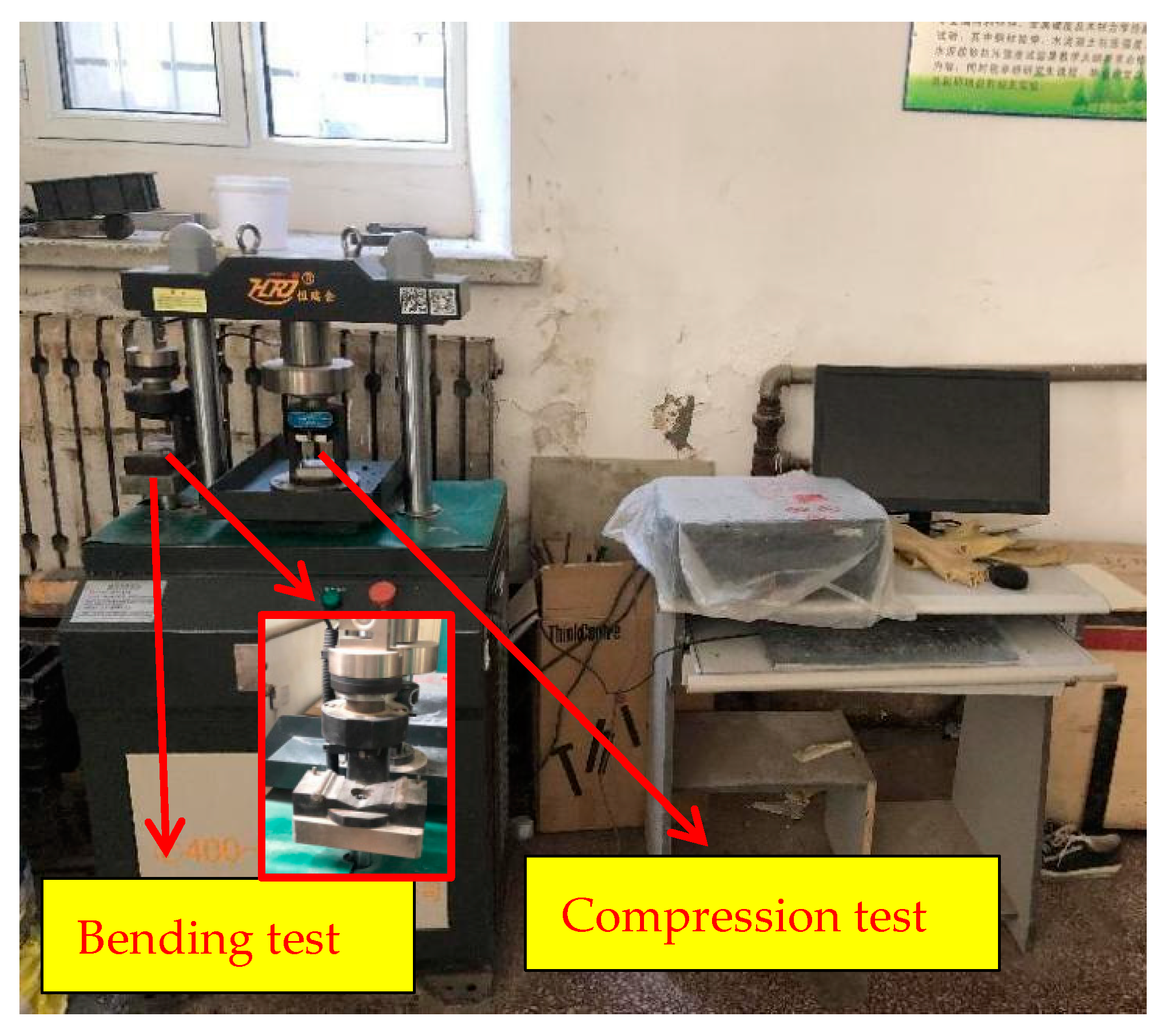
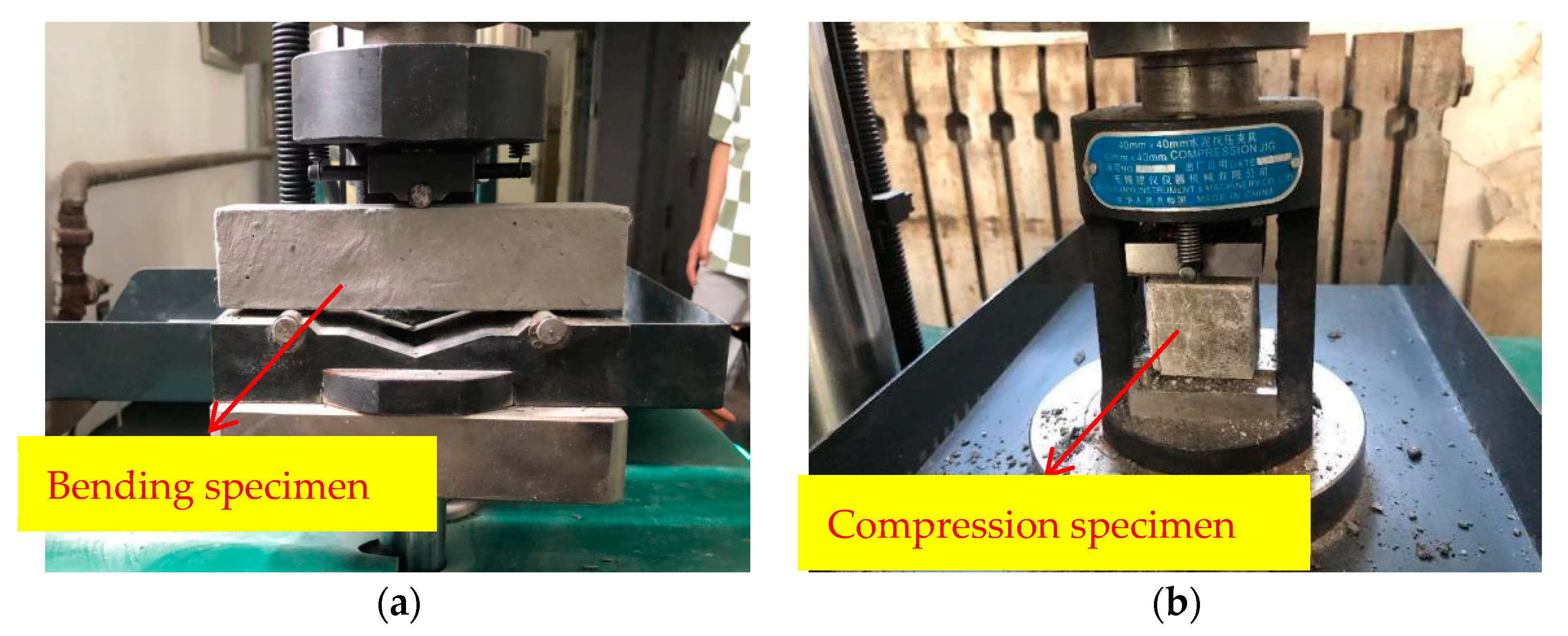






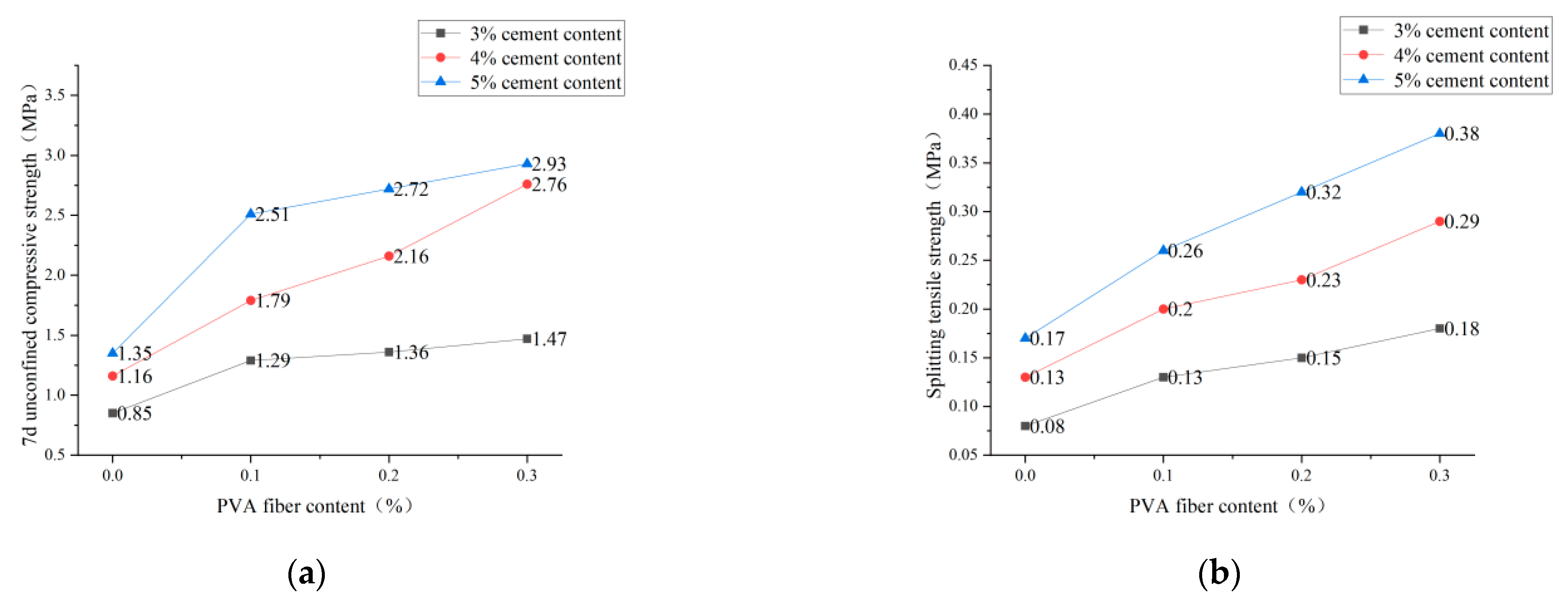
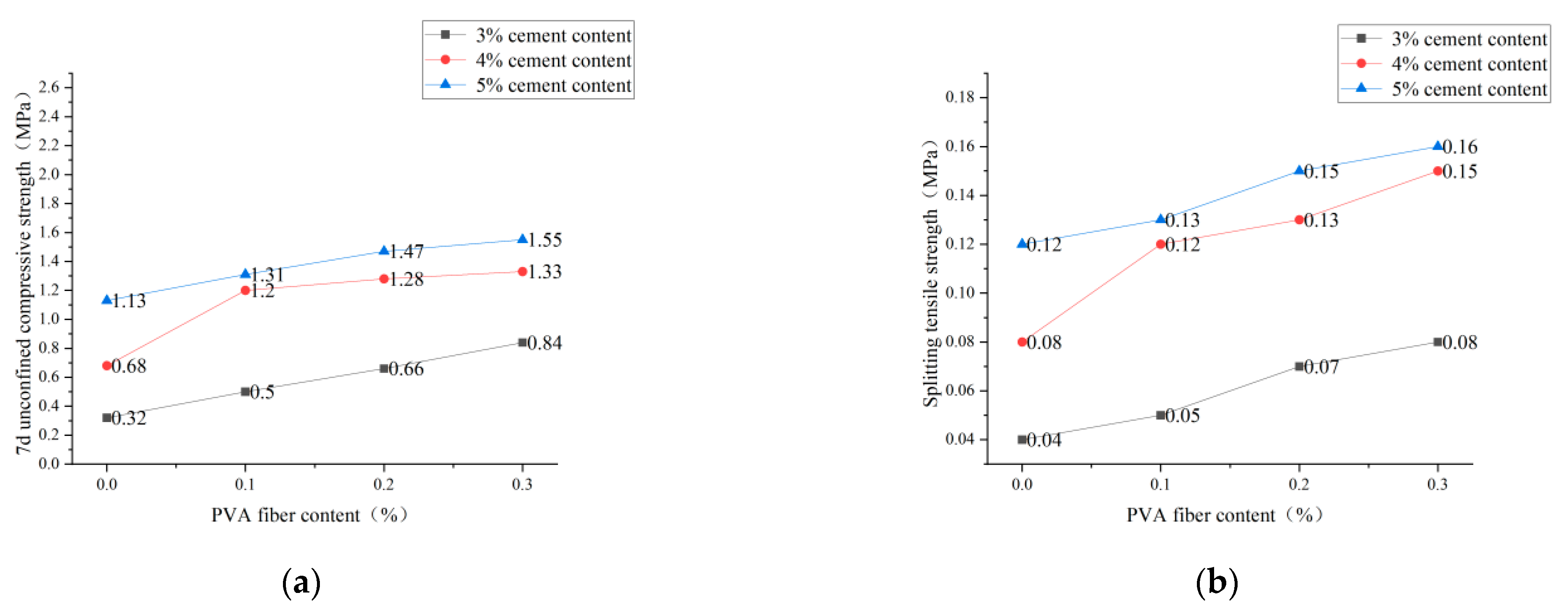
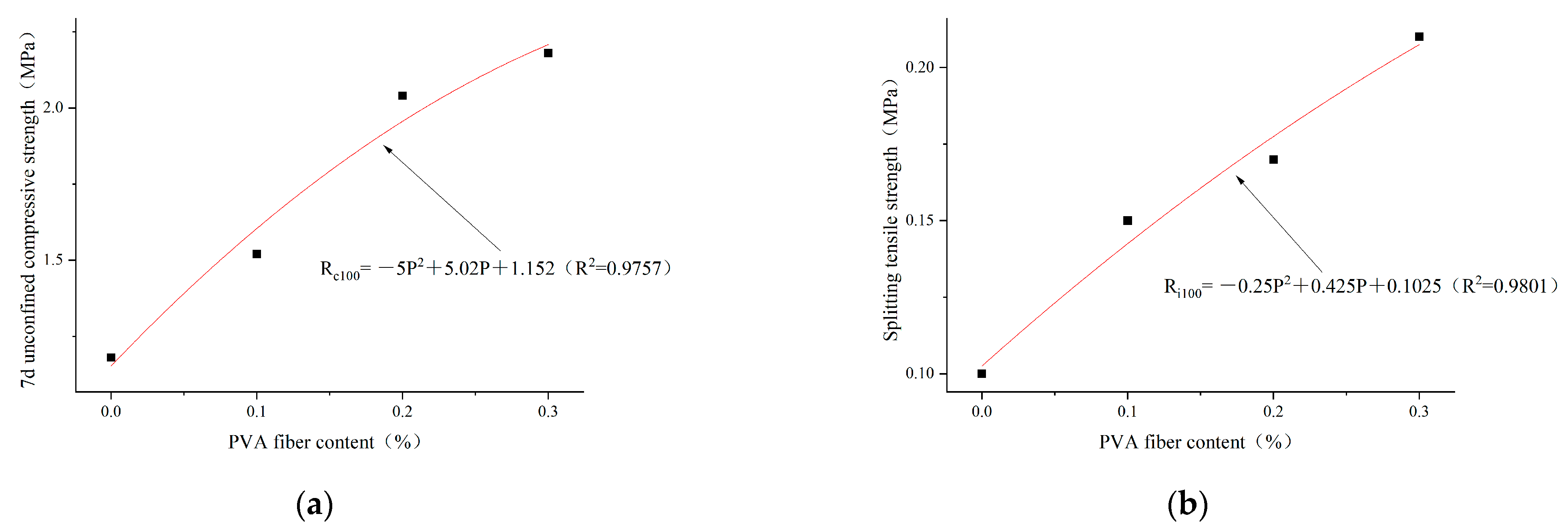




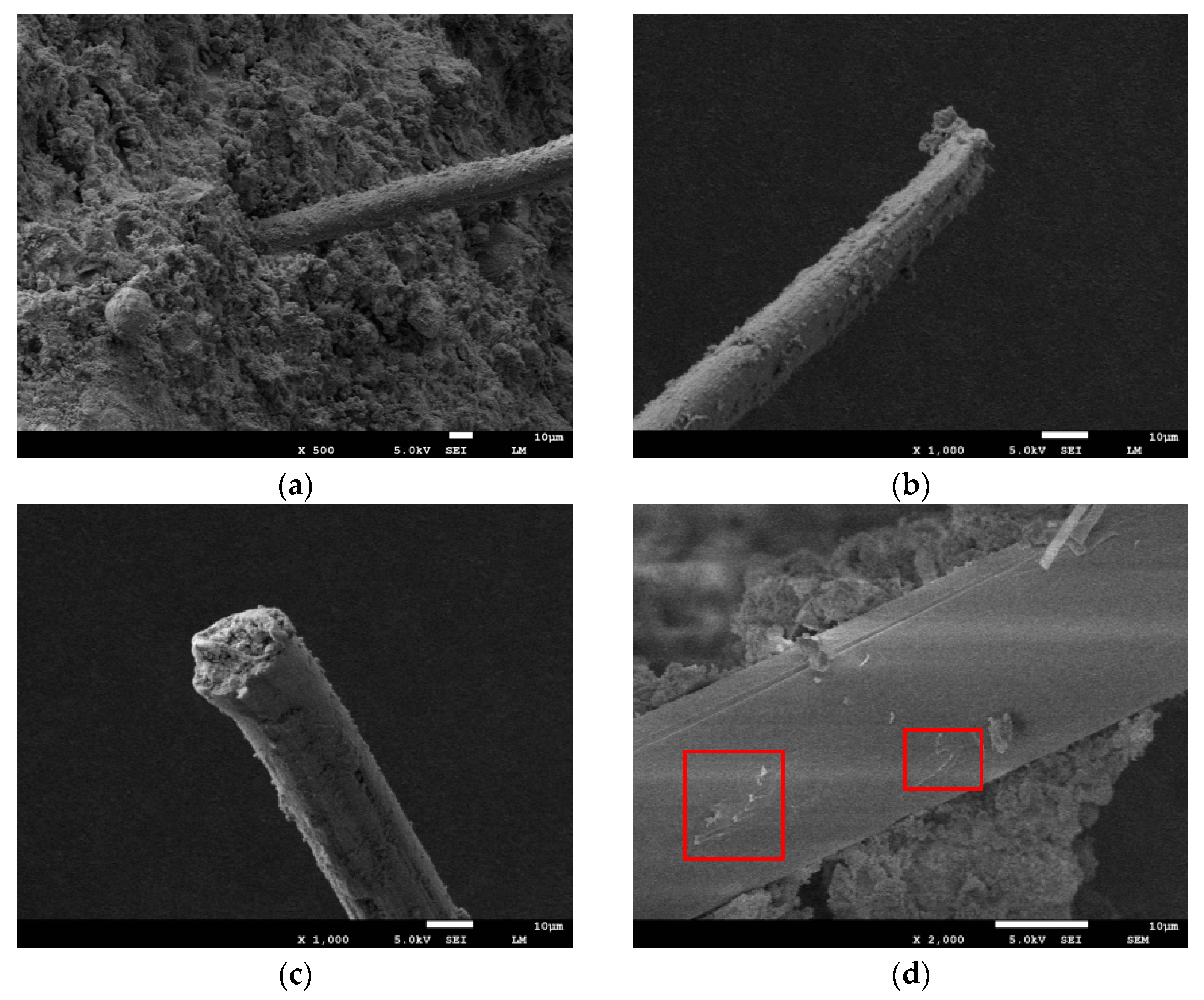




_Chen.png)



